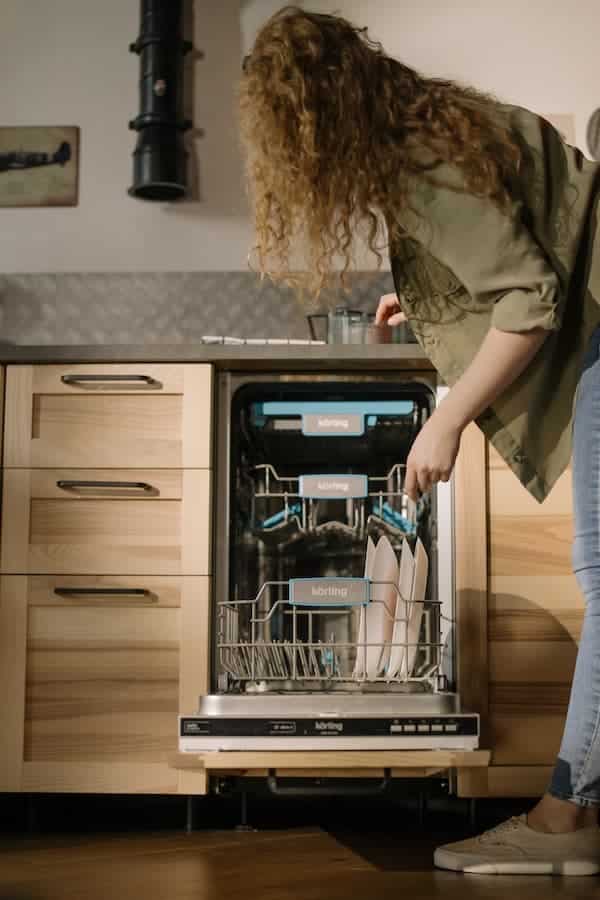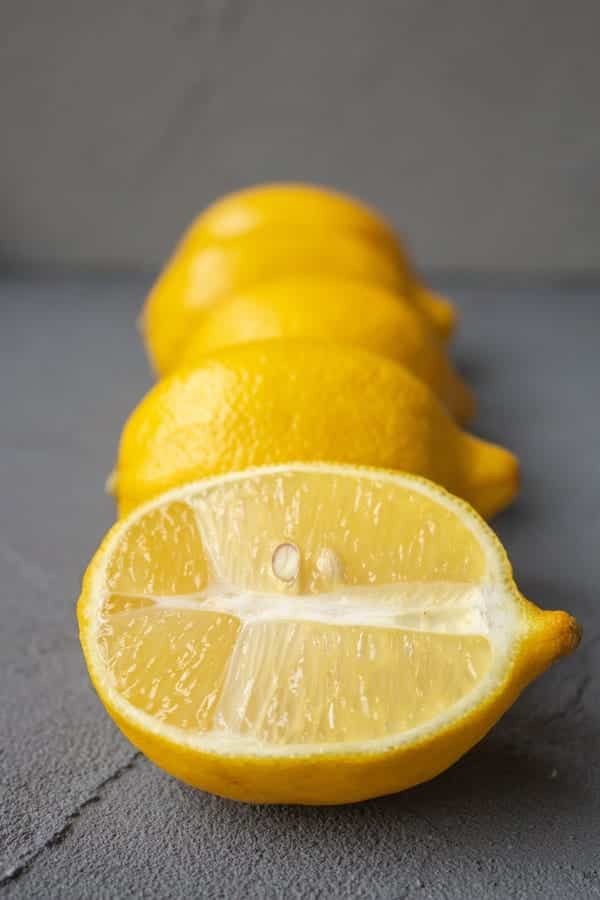Tea is one of the most widely consumed drinks around the world. It boasts hundreds of varieties, from English breakfast to traditional Japanese sencha.
But this highly regarded drink has one big problem, the inevitable staining of your favorite mug. This article will get to the bottom of how to ensure unsightly stains will never be a problem, and you can peacefully enjoy your tea-drinking routine for years to come.
There may be affiliate links in this article. You can read more about this in my disclosure.
Why Does Tea Stain Your Mug?

For many, sitting down for a warm, freshly brewed cup or your favorite tea blend is the highlight of every day. But really, you are doing yourself and your body an excellent service.
Not only are you satiating your caffeine craving, but you are also drinking what has been claimed to be a superfood, chock-full of antioxidants, vitamins, and other rejuvenating qualities. However, even with all of these benefits, they are also rich in something called tannic acid.
Titanic acid or tannins are a compound that has been used in dyes, inks, and leather tanning for centuries. So you may be surprised to hear that this acid is naturally present in a variety of your beloved beverages like tea, coffee, wine, and fruit juices.
Tannins are responsible for the distinctive color and flavor of teas but, of course, come with their annoying discoloring tendencies.
Why Do Tea Stains Not Come Off in the Dishwasher?

Only when you are serving tea to your guest do you tend to quickly realize how quickly your array of mugs have sneakily accumulated an unsavory collection of brown rings. Drat!
Even though they have all been freshly cleaned for the occasion, it certainly doesn’t appear that way.
Sadly, even with regular cycles through your dishwashing machine, it tends not to put a dent in the staining process. This can be for a few reasons, from water quality to the chemical composition of your dishwashing tablets.
However, in simple terms, the tannin stains are not particularly water-soluble.
Tea stains require a bit of an added punch to get them moving. This can come in two forms, a bit of elbow grease or the use of a slightly more potent cleaning agent.
Tips Before You Start Cleaning Your Mugs
The material of your mug will influence which cleaning method you should use. Depending on the porosity, age, density, and material of your favored drinking vessel will all prefer a particular approach to cleaning.
But don’t worry. You can always try multiple methods before you find the best. Or you can test it out on a small section first to see what gets you the best results.
Also, we are all guilty of forgetting about our favorite brew from time to time. It can be hours, days, or sometimes weeks before we discover a now festering mistake (which is probably the origins of kombucha).
However, this is the cardinal sin for preventing stains. The longer you leave your tea soaking, the deeper penetrating, darker, and most stubborn the stain.
Methods for Cleaning Tea Stained Mugs

Before you clean your mug, you should remember a couple of things. First, make sure you give it a quick hand wash.
This may seem like a waste of time, but to get the best results from the cleaning method, the mug’s surface needs to be clean of all contaminants.
Second, make sure you have a little time. Most of these methods need soaking time combined with a bit of scrubbing action.
So carve out an hour of your day and be ready to commit your full attention to ensure you get rid of those stains for good.
Most of the cleaning methods are pretty gentle, so you may have to repeat the technique before you get your desired results for more stubborn stains. This is because you will be consuming directly from the mug, so no harsh or toxic chemicals must be used.
White Vinegar
Vinegar is a tried and tested method. It is a mild but effective acid that is great at attacking tea tannin stains.
Stored deeply in most people’s kitchen cupboards, it is a cheap and easily utilizable cleaner.
For the best results, heat some distilled white vinegar in a saucepan until it simmers. Then, add it to the mug and let it sit until the vinegar cools to room temperature.
Finally, pour it out and wipe the inside of the cup vigorously; in most cases, you will easily wipe away the stains.
[amazon box=”B07CN5K12R” template=”vertical”]Baking Soda
Baking soda is one of the home remedy staples for cleaning any stubborn stain. It is an age-old method that has been a proven weapon in any thoughtful cleaner’s arsenal and is found in almost every kitchen.
It is a mild alkali with antibacterial properties, which is very effective at dissolving and loosening tannin stains. It most often comes in the form of a soda which provides a gentle abrasive quality that is still soft enough to be used on the most delicate china.
Mix a cup of soda with enough water to turn it into a paste and apply generously to the inside of the mug. Allow it to wait a few minutes, then gently scrub it with a damp cloth.
[amazon box=”B074J7X1DN” template=”vertical”]Toothpaste
An unlikely but beneficial method is using toothpaste. Toothpaste is an alkali and usually has some abrasive qualities.
It is almost as good at cleaning your teeth as it is on stains, and you are sure to have some in your house already.
The best way to apply the toothpaste is to smear it all over the inside of your mug. Then take your toothbrush and scrub as you would your teeth.
The bristles of your brush, the toothpaste’s cleaning capacity, and an excellent team for tackling even the most stubborn tea stains.
[amazon box=”B07JWVT19F” template=”vertical”]Salt
Salt is naturally antibacterial and excellent for scrubbing away grime and stains. First, you need to make a paste with salt and water, then apply it to the inside of the mug.
Allow it to sit for around 15 minutes, then use a sponge to scrub the mug’s interior.
This method would be best for a more standard mug and not so much for delicate china as it is a little rougher than other techniques.
I recommend that you be careful when scrubbing because if you have any little cuts on your hands, they may sting a lot! Preferably use gloves.
Lemon

Like vinegar, lemon is a mild acid and a great natural cleaning agent. It acts as a bleaching/whitening mechanism and an effective disinfectant.
Not only that, but you will have an amazing smelling array of mugs after they are scrubbed.
Squeeze a whole lemon into your mug before adding boiling water and allow it to rest for around 30 minutes. Then pour away the liquid and wipe it out thoroughly for the best results.
Denture Cleaner
An unlikely but amazingly effective stain remover would be denture cleaner. These most commonly come from effervescent tablets, which readily dissolve in water.
They make for excellent cleaners as they are designed purely to tackle dental staining and remove grime with minimal effort required. Some are even advertised as nontoxic coffee and cigarette stubborn stain removers, so imagine how well they will take on a little brown tea stain.
They are straightforward to use. Add a tablet to your mug and add some warm water to begin the dissolving process.
For the best results, leave them to soak either overnight or at least 3-4 hours. Once ready, pour out the remaining liquid and rinse the mug thoroughly.
This is a final disclaimer that all of these methods are very safe for you to use and to remind you that using any harsher chemical such as bleach is never a good idea.
[amazon box=”B000GGKPWQ” template=”vertical”]Summary
Enjoying a freshly brewed tea should remain a pure, stress-free, relaxing experience. The last thing on your mind should be the prospect of cleaning or damaging your prised mug during your daily ritual.
With these simple methods to tackle even the most stubborn and unsightly tea stains, you should never be concerned about enjoying your hobby again. Just remember to make sure you act quickly and clean regularly.



